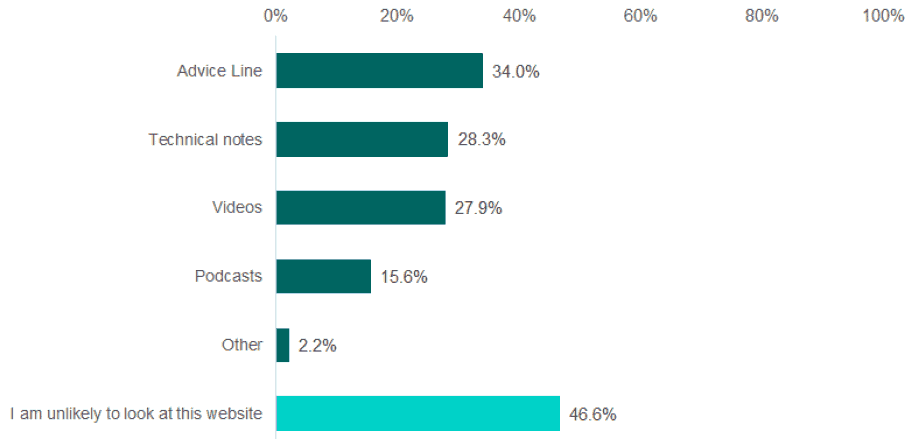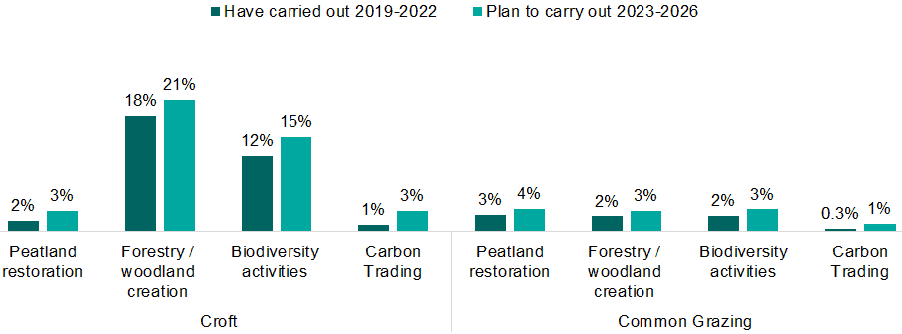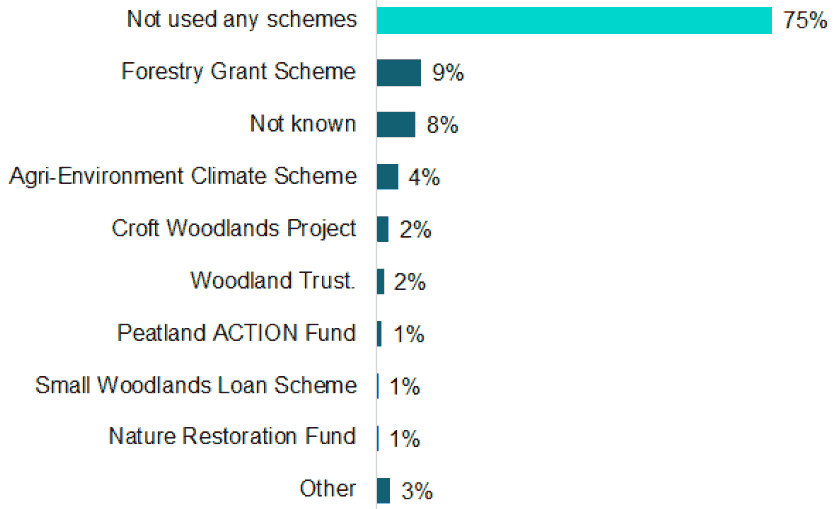Economic conditions of crofting: survey 2019 to 2022
This report provides a detailed outline of the uses and financial situation of crofts in the years between 2019 and 2022.
7. Peatland restoration, biodiversity and forestry and woodland creation
7.1. Summary of key points
- The most common activities that were carried out were biodiversity activities on the croft (12%), and woodland or forestry creation on the croft (18%). These were also the two activities more likely to be carried out between 2023-2026 (15% and 21% respectively).
- 25% have used available schemes to restore peatland, carry out biodiversity activities, or create forestry or woodland. Where schemes have not been used, the main reasons for not using them were lack of information on how to do this (38%) and being uncertain of the benefits (37%).
A series of new questions were included in the 2022 survey on the topic of peatland restoration, biodiversity activities and forestry and woodland creation in order to create a baseline figure on these activities, inform future work and help target support and information. Crofters were asked if they had undertaken any of these activities between 2019-2022 or whether they intended to carry out these activities between 2023-2026.

Base, Have carried out, n=888; Base, Plan to carry out, n=885
28% of respondents had carried out these activities in the 2019-2022 period and 34% plan to carry out these activities in the period 2023-2026. However, where these activities were carried out, the most common were biodiversity activities on the croft (12%), and woodland or forestry creation on the croft (18%). These were also the most popular activities planned for the future with 15% stating they would undertake biodiversity activities on the croft during the 2023-2026 period. A further 21% stated they would undertake forestry or woodland creation in the future. Much smaller proportions mentioned carrying out peatland restoration (1.6% on crofts and 2.6% on common grazing).
Forestry or woodland creation have been carried out by significantly more crofters who have been crofting between three and ten years (25%) than those who have been crofting for over 20 years (15%). They were also more likely to have undertaken biodiversity activities on their croft (15%) than those who had been crofting for more than 20 years (9%). Younger crofters were more likely than all other age groups to have said they have undertaken at least one of these activities (48%).
7.3. Schemes used

Base: respondents, n=666
Respondents were asked to identify any schemes, if any, they had used to either restore peatland, carry out biodiversity activities, or create forestry or woodland. 75% had not used any schemes. Where respondents had used schemes, the most popular responses were the Forestry Grant Scheme (9%) and the Agri-Environment Climate Scheme (4%).
7.4. Obstacles to undertaking these activities

Base: respondents, n=690
The most common obstacles preventing crofters from undertaking these types of activities on their croft or common grazing is a lack of information on how to do this (38%), followed by the uncertainty of the potential benefit of the activities (37%), the administrative hassle of available schemes (35%), and a lack of sources of funding (33%).
Contact
Email: socialresearch@gov.scot
There is a problem
Thanks for your feedback